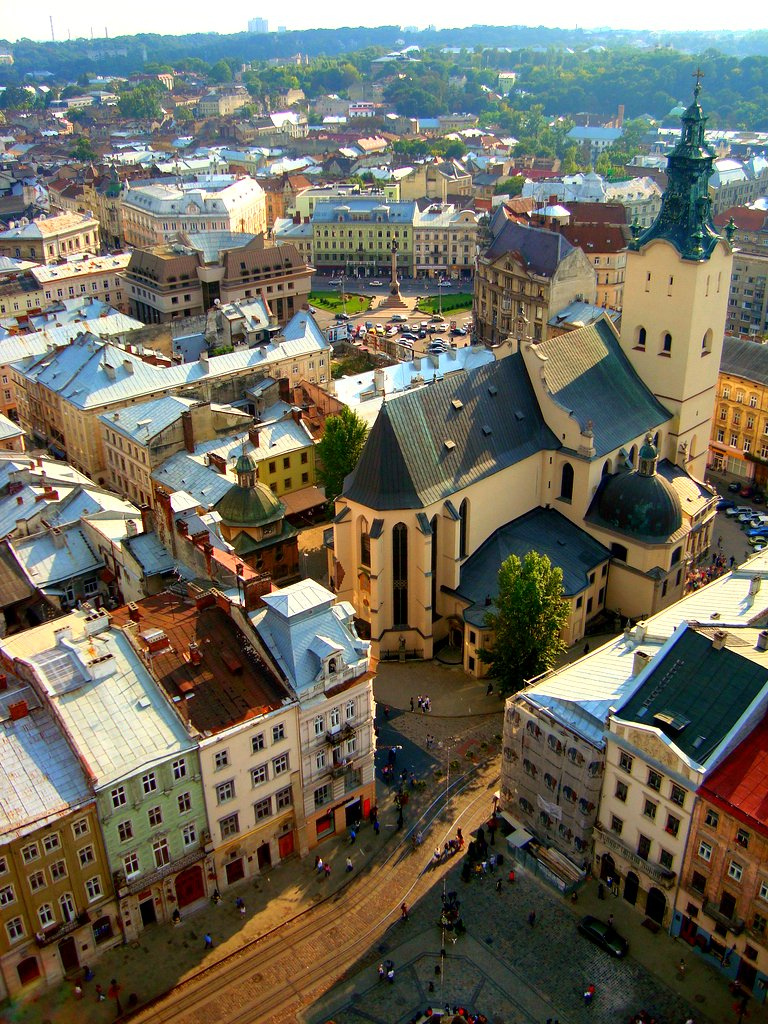A review of The Post-Secular in Question: Religion in Contemporary Society. New York: NYU Press, 2012. 375 pp. Edited by Philip Gorski, David Kyuman Kim, John Torpey and Jonathan VanAntwerpen, and What Matters? Ethnographies of Value in a Not So Secular Age. New York: Columbia University Press, 2012. 288 pp. Edited by Courtney Bender and Ann Taves.
By James S. Bielo
“What does it mean to pursue, inhabit, or lead a valuable, ethical life in a secular age?”
“Are we living in a post-secular world?”
These questions respectively open two impressive collections: What Matters? Ethnographies of Value in a Not So Secular Age (Bender and Taves, eds. 2012) and The Post-Secular in Question: Religion in Contemporary Society (Gorski, et al., eds. 2012). Both volumes explore religion’s formative role in contemporary life and the treatment of the religion-secular binary by social scientists. Given the weighty baggage of “religion” and “secular” (my one indulgence in scare quotes for this review), the volumes are duly suspicious of and indebted to these orienting terms. In fact, few categories in the study of religion emerge unscathed or un-scrutinized across the 22 essays: spirituality, ritual, belief, materiality, experience, ethics, value, authority, enchantment/disenchantment, transcendence/immanence, faith/doubt, public/private – all receive some exploratory comeuppance.
Throughout the essays, there is a constant sense of entanglement. Religious-seeming impulses appear in self-scored secular domains, and vice versa. The language and categories of secularity are appropriated by religious communities, and vice versa. Social and intellectual histories are shown to harbor scientism and mysticism. Borders between the religious, secular, moral, ethical, spiritual, mystical, faithful, and rational are continually recognized, and then promptly crossed. The commitment to ambiguous boundaries owes to a shared premise between the two volumes: the religious and the secular are, and have always been, locked in a dialectical relationship. This stance is reasserted throughout the volumes, usually with a nod to Talal Asad’s Formations of the Secular (2003). In stressing this dialectic, the authors largely accept that the definition of one will impinge on how the other is defined, that they travel together historically (you can’t have one without the other), and that neither is an inevitable outcome (they both were, and continue to be, fashioned under particular socio-historical conditions). The sense of cultural contingency is strong here. Contextual sensibilities weigh heavily. Empirically-based claims are kept very specific. There is a pervasive weariness toward universalizing arguments, particularly ones that leap across historical epochs or ignore Western/non-Western differences.
While they converge on similar questions, and share important premises, What Matters? (WM) and The Post-Secular in Question (P-S) are not twins. WM confines itself to a narrower orienting issue: the construction and pursuit of value amidst “secular, religious, and spiritual frames” (2). WM also accrues a nice edge by focusing on self-consciousness, “the degree to which people reflexively consider the value of their activities and those of others” (2). WM is also more stridently empirical; the eight main essays all emerge from extended historical or ethnographic work. Each case study explores a religion-secular entanglement: early debates in academic archaeology about the role of spirituality in human origins, creativity, and evolution (Tomaskova); exchanges between academic and religious uses of the psychological category of suggestibility (White); the emergence of a Pentecostal public sphere in Ghana (Meyer); the global ambitions of humanitarian organizations (Bornstein, Redfield); the diverse motivations prompting U.S. parents to homeschool their children (Allahyari); intellectual struggles to define human nature at a para-psychology think tank (Kripal); and the spiritual appropriations that occur at global psytrance festivals (St. John). Homeschoolers and para-psychologists? Archaeologists and psytrance dancers? These may seem like odd pairings, but I believe they testify to the editors’ purpose: to show the range of social spaces where ethical designations cross paths with the religious, secular, and spiritual.
P-S is a far more diverse volume. Essays range in kind from history to empirical sociology, philosophical treatise, and theoretical provocation. Much more so than WM, this volume contains disagreement and tension among contributors. Some defend a version of secularization: on the grounds that modernity forever differentiated the religious from the secular in public life (Turner); on the need to study religious decline in specific historical contexts (Torpey); on the academy’s role in authorizing secular knowledge (Masuzawa); and, another nod to Asad, on treating secularism as a constitutive presence not an absence (Calhoun). Then, there are others who write against the secular and with the post-secular (Madsen, Bender, de Vries, Smith, and Schmalzbauer and Mahoney). The chapters by Michele Dillon and Eduardo Mendieta present contrasting, though not wholly antagonistic, versions of how Jurgen Habermas has incorporated religion into his articulation of the public sphere. The chapters by Tomoko Masuzawa and John Schmalzbauer and Kathleen Mahoney both take on the relationship between U.S. academic culture and secular knowledge production, but paint different portraits of academia’s present and future. Other contrasts within the volume are more jarring. For example, Bryan Turner and James K.A. Smith, despite both wanting to see religion as embodied action, find very little common ground in their chapters. Much like WM, the strength of the volume rests on this diversity. I can easily envision professors using the tensions within P-S to stimulate lively and productive classroom debate.
Attentive readers, I am sure, sense the incredible richness contained in these two volumes. Taking the individual essays in turn, and doing each justice, would make for a lengthy review, so I take a different tack. After filling in some needed background on the secular/post-secular divide, I elaborate two key themes that emerge from reading the volumes side-by-side: contests of authority in the public sphere, and coming to grips with the context of late modernity. Briefly, I should highlight a few strengths that characterize the collections. First, both take us well beyond tired back-and-forth debates about the extent to which contemporary life is enchanted, disenchanted, or re-enchanted. Both demonstrate the complex and lingering inheritances of modernity in contemporary life, as a real historical era and as an era scholars have theorized. And, lastly, both go a long way toward disentangling the post-secular as emergent reality, as theoretical frame, and as philosophical program for the good society.
What Comes Without Saying Goes Without Saying
WM and P-S write with and against a very long intellectual history about religion, secularity, spirituality, and modernity. Not surprisingly, major theorists of modern life loom large, which means we hear continual reference to Karl Marx, William James, Emile Durkheim, Max Weber, Peter Berger, Robert Bellah, Habermas, Asad, Jose Casanova, and Charles Taylor. It would be difficult, not to say foolish, to wager which thinker reigns as most influential. But, hands down, the specific analysis recounted more than any other is Jose Casanova’s three-versions-of-secularization argument, referenced no less than seven times across the 22 essays.
In Public Religions in the Modern World (1994) Casanova distinguishes three versions of secularization, only one of which does he deem empirically valid. The so-called disenchantment thesis – usually associated with Weber – predicts the decline of religiosity with the triumph of secular rationality. With apologies to Mr. Twain, the reports of religion’s death were greatly exaggerated. The privatization thesis – articulated most thoroughly by Thomas Luckmann in The Invisible Religion (1967) – suggests that religion will be increasingly quarantined to private life. This version seems to have never been true outside Western Europe, its falseness amplified by numerous late 20th century public mobilizations among religionists.
The version of secularization Casanova defends, and that these essays either uphold or take seriously as an interlocutor, is the differentiation thesis. The claim is not about decline or retreat to behind closed doors; it is that modernity successfully tattooed religion as something different, something identifiable in contrast to other orders of discourse. Taken a step further, in the public sphere religion is not only marked, it is deemed incompatible with integral social structures. The tattoo turns scarlet letter. There is a strong congruence here with Charles Taylor’s work in A Secular Age (2007), the presence of which is felt nearly as strong as Casanova’s in the volumes. In short, religion has lost its ability to exist as a taken-for-granted worldview and must now compete with other authoritative modes of explanation. This is the meaning of the secular that WM and P-S enter into dialogue with.
The concept of the post-secular, which preoccupies P-S and is a useful lens for reading WM, is also fueled by notions of the public and of losing a taken-for-granted status. There are several tributaries to the post-secular river.
First, public intellectuals have begun to openly consider, if not outright advocate for, the inclusion of religion as a viable perspective in building a healthy society. Philosophers like Habermas and Richard Rorty have doubted out loud whether secular rationality is all it is cracked up to be; others like Alan Badiou have used religious sources to formulate political theologies; and social critics like Robert Putnam have lamented declines in social capital and the restorative promise of religion. In P-S, Hent de Vries, Smith, Schmalzbauer and Mahoney, Dillon, and Mendieta think through the emergence of an organized post-secular movement. In this way, P-S helps contextualize the WM essays by Erica Bornstein, Peter Redfield, Rebecca Allahyari, and Jeffrey Kripal.
Restoring (or reasserting, depending on who you ask) value to religion in public life is also tied to the success of standpoint theory. As the saying goes, there is no view from nowhere. This stance has been critical to the vitality of feminist and post-colonial theory. We need to destabilize the notion that any one vantage point carries innate decisive authority or neutral objectivity. So, if there is always ideology at work, we need more seats at the table. Writing as a Christian, John Milbank gave a forceful critique of secular rationality and the hermeneutics of suspicion in Theology and Social Theory (1990). Smith (P-S) runs with this approach most enthusiastically, arguing for a liturgical definition of religion and a model of personhood that operates “on a register closer to love than logic” (175). The no-view-from-nowhere commitment also propels Bender (P-S). She critiques mainstream social scientists for ignoring their preconceptions about the religious, secular, and spiritual in designing research projects. She goes on to advocate the study of religion-secular entanglements in social contexts that are not self-evidently religious or secular (think: Kathryn Lofton’s Oprah (2011)). Again, this aids our reading of WM, particularly the chapters by Silvia Tomaskova and Kripal who address struggles for authority among competing worldviews.
Finally, the post-secular tracks to what we might call the ethical turn in the social sciences. As the argument goes, our remit is not purely theoretical or descriptive, but active. We are called to fight against pressing social problems. Whence, we have applied anthropologists, public sociologists, and translational researchers. The question post-secular proponents raise is where we derive our moral systems and imperatives from? What equips us to discern the ethical from the unethical? Gorski (P-S) is the most intentional in this direction, arguing for a rediscovery of Durkheim’s writings on morality to shape a vision of the public good and a sociology that targets “practical prescriptions for the moral ills [of society]” (91). Interestingly, the entirety of WM can be read in this vein because it reminds us that posing and solving questions of ethical value – using the tools of religion, secularity, and spirituality – is the business of a great many social actors, not a few social scientists.
The contributors to P-S do not really entertain the possibility of a tectonic shift from secular to post-secular. A post-secular age is not plotted as displacing or replacing a secular one. If anything, the post-secular remixes Taylor’s immanent frame. The secular has gone to the tattoo parlor. It is no less marked as the religious. Any taken-for-granted status secularity enjoyed has been ceded. As the P-S editors write in their introduction, “the universalistic claims associated with modernity can no longer be sustained without demurral” (2). It is in the spaces and acts of demurral where advocates for public religion thrive. Differentiation continues, but legitimacy, doubt, trust, power, influence, and suspicion are constantly negotiated. This is the meaning of the post-secular endorsed across these essays. In short, contests over authority are amplifying in number and intensity. It is to authority I now turn, the first of two key issues that emerge from the volumes.
Who do you trust?
Theorists of religion-secular entanglements have devoted significant attention to authority. Weber did so through the iron cage, Berger through plausibility structures, Asad (via Foucault) through discourse. It is no accident, then, that matters of authority continue to figure prominently in the post-secular debate. Courtney Bender and Ann Taves, in their introduction to WM, include authority as one of three “key terms” (19) for their comparative inquiry. Read alongside P-S, I would go further. Authority is more key than other keys.
Authority is most certainly felt in our most private moments – thoughts, feelings, desires, predispositions, impulses, self-censorings. No half-awake reader of social theory could think otherwise. But, contests of authority in post-secular debates gravitate to the public sphere. Publics, after all, are where the differentiation thesis comes to life. It is a war for the hearts and minds, but the battles will be televised (then posted on YouTube…then tweeted).
A cluster of examples are repeatedly invoked as definitive proof against the privatization thesis and reason to doubt an equation of differentiation=secular dominance: “the public and powerful role of the Catholic Church in the Polish Solidarity movement, the political rise of the Moral Majority in the United States, and the Iranian Revolution” (WM, 4). While important, using this list to gauge public contests of authority is remarkably conservative (in a gambler’s sense). We need a much broader lens than nation-state politics, a fact not lost on most of the contributors. There is the field of education, wherein religion-secular exchanges occur from primary school (WM, Allahyari) through undergraduate and graduate training (P-S, Schmalzbauer and Mahoney). White (WM) gives a nuanced analysis of religion-secular exchanges in late 19th/early 20th century popular psychology, and in the process outlines a nice template for how fields of popular thought get contested. There is also the diverse field of voluntarism, humanitarian work, and social engagement. Bornstein (WM) and Redfield (WM), writing respectively on rural development in India and Doctors Without Borders, both find substantial collapse between religion-secular motivation and experience. Publics are further realized through popular culture, media, courts, markets, and care facilities. In any expression, publics must be actively made and reasserted, as they will most certainly be actively challenged.
When the rubber hits the road, public contests of authority are about power. I recall something Pierre Bourdieu wrote in Language and Symbolic Power (1991): “The competence adequate to produce sentences that are likely to be understood may be quite inadequate to produce sentences that are likely to be listened to, or likely to be recognized as acceptable in all the situations in which there is occasion to speak” (55). Bourdieu was writing about legitimized and de-legitimized linguistic varieties, but the same rings true when authority is claimed through religious, secular, or spiritual registers. The point is that we do much more than simply listen to public discourse: we trust, ignore, judge, evaluate, appreciate, praise, believe, doubt, obey, dismiss, scoff, critique, revoice, and a great deal more. I am also reminded of The Joker from Batman (1989): “Hubba, hubba, hubba, money, money, money, who do you trust?” The debates engaged by these two volumes help us reckon with authority in these concrete terms. Who do we listen to? Who produces knowledge we accept as truth? Who are we suspicious of? What forms of knowledge and practice serve as legitimate cultural capital for us: scientific method, bodily experience, dreams, global travel, competency in ancient texts? And, how do elements of political economy – say, funding mechanisms in academic culture (P-S, Schmalzbauer and Mahoney) – shape the production of authoritative knowledge?
Gone Global
Critics and defenders of secularization theory have always also been theorists of modernity. How does being modern – economically, politically, technologically, and intellectually – intersect with faith, rationality, spirits, materialism, and other religious and secular currencies?
Of course, several contributors reject the idea that being fully modern means being secular. Meyer (WM) does this through her long-term ethnographic work in Ghana, a constitutionally secular state whose public was never really secular and where, “Spirits…are not just there, as signs of a traditional past, but reproduced under modern conditions” (88, emphasis in original). Smith (P-S) does so through a presumed model of personhood, “humans (including social scientists!) are inescapably religious animals, [by which] I mean that humans are liturgical animals whose orientation to the world is shaped by rituals of ultimacy” (165, emphasis in original). However, these two volumes mark a matured effort to think through religious-secular entanglements not because they better articulate the failure of secularization theses, but because they adjust the contextual dial from modernity to late modernity. In other words, both volumes appreciate the sea change that social scientists, religious fundamentalists, New Atheists, inter-faith collaborators, multi-faith spiritualists, do-gooder rationalists, and everyone else now swims in.
Dillon (P-S) places Habermas’s “new regard for religion” (255) in the context of “the post-1970s era” (ibid), an era defined by neoliberal globalization and post-colonial transnationalism. She describes this era as “qualitatively different” (ibid), a characterization de Vries (P-S) accepts in his analysis of Barack Obama’s Reinhold Niebuhr-esque political theology: “Our current global crises…have little in common with the predicaments of the immediate postwar and Cold War periods that faced Niebuhr” (124). The matured question these volumes help us ask, then, is: how do religion-secular entanglements operate in the late modern world?
We might begin with the familiar notion that our globalized era is one of rupture and fragmentation. What Said (1979) classed as a “generalized condition of homelessness” (18) is fueled by flexible labor regimes, waves of forced and voluntary migration due to unstable governments and markets, and consumption economies that beckon cultural tourists. As a general rule, these structural conditions create more diverse societies and, in some cases, a rising commitment to multiculturalism (P-S, Turner 145). Our late modern hyper-mobility also produces distinctly transnational formations. Turner (P-S) notes some disagreement here, arguing contrary to the dominant view that global fundamentalisms are the poster child of transnational religion, “the real effect of globalization has been the growth of heterodox, commercial, hybrid, syncretistic religions over orthodox, authoritative, and institutional versions of the spiritual life” (154). Bornstein (WM) and Redfield (WM), again a useful pairing, show us something of the dilemmas, promises, and notions of a global good that accompany border-crossing humanitarian efforts. Graham St. John (WM) presents the popular (counter)-culture example of psychedelic trance, transnational festivals that embed an amalgam of spiritualized strivings in a leisure economy package. Taken together, the volumes provide plenty of comparative fodder for thinking about how religion-secular entanglements will exist in this kind of global scene.
Late modern globalization is also felt through the effects of neoliberalism. Never detached from its free market economic principles (and, the political structures that promote them), neoliberal tentacles reach people in all sorts of places. Allahyari (WM) illustrates this most convincingly through the example of homeschooling. Her consultants made decisions for their children in a context where “neoliberal educational reform is perhaps at its most avant-garde in the charter school movement” (183) and a “curricular emphasis on self-governance” (204) produces “neoliberal subjects of both parents and children” (ibid). In this vein, the volumes potentially open a very intriguing debate about the convergence and divergence of the neoliberal drive to privatize markets and lingering secularization thinking about privatized religion. Could the neoliberal private convert some religious publics away from their attachment to being so public? Or, could increasingly post-secular societies make neoliberal privates more public?
Recommended
To close, I will reiterate that The Post-Secular in Question and What Matters? are both highly recommended. For the empirically-devote, there are plenty of cases to chew on; and for the theoretically adventurous, there are some wonderful tour guides. They complement each other by framing an inquiry into how ethical values are discerned and authorized in a global world that maintains ambiguous relations with both the secular and the religious. Here, I have mined only deep enough to show the rich score that awaits. For example, I have said nothing about citizenship, which is a theme that strikes me as “key” (forgive that excessive indulgence). How do forms of belonging – to political nations, spiritual kingdoms, economic orders, human rights causes, intellectual communities – shape “what matters, what goals to pursue, and what things are of most value” (WM, 1)? Others will dig and find other key keys. Fortunately, the volumes’ contributors afford us the needed light to dig at will.
James S. Bielo is Lecturer in the Department of Anthropology at Miami University. He is the author of Words Upon the Word: An Ethnography of Evangelical Group Bible Study (NYU, 2009), Emerging Evangelicals: Faith, Modernity, and the Desire for Authenticity (NYU, 2011), and editor of The Social Life of Scriptures: Cross-Cultural Perspectives on Biblicism (Rutgers, 2009).
References
Asad, Talal. Formations of the Secular: Christianity, Islam, Modernity. Stanford: Stanford University Press, 2003.
Bourdieu, Pierre. Language and Symbolic Power. Cambridge: Harvard University Press, 1991.
Casanova, Jose. Public Religions in the Modern World. Chicago: University of Chicago Press, 1994.
Lofton, Kathryn. Oprah: The Gospel of an Icon. Berkeley: University of California Press, 2011.
Luckmann, Thomas. The Invisible Religion: The Problem of Religion in Modern Society. New York: MacMillan, 1967.
Milbank, John. Theology and Social Theory: Beyond Secular Reason. London: Blackwell, 1990.
Taylor, Charles. A Secular Age. Cambridge: Harvard University Press, 2007.
Said, Edward W. “Zionism from the Standpoint of its Victims.” Social Text 1, 1979.
cover image: Malaga, Spain via 123rf.com







